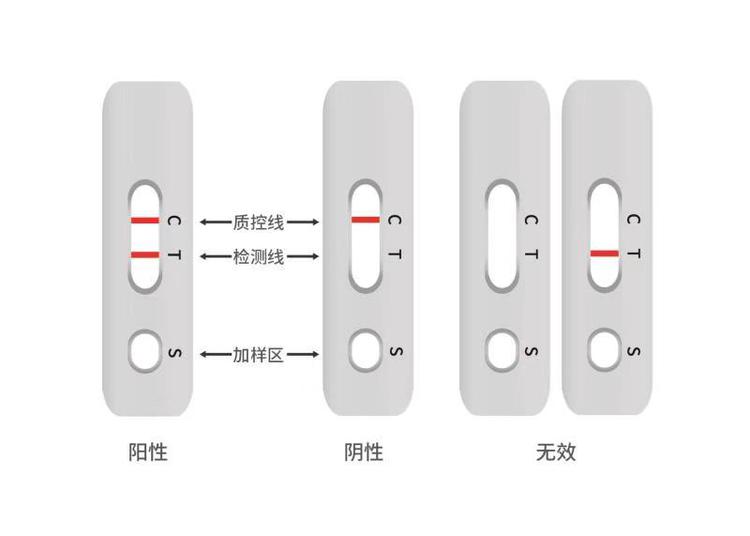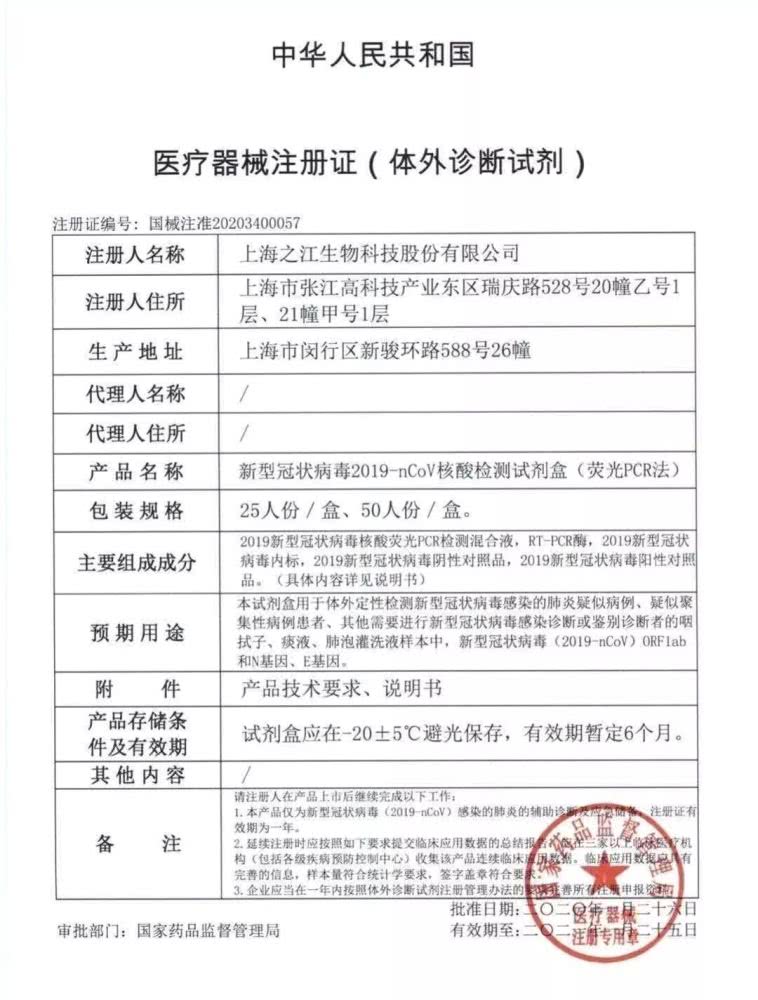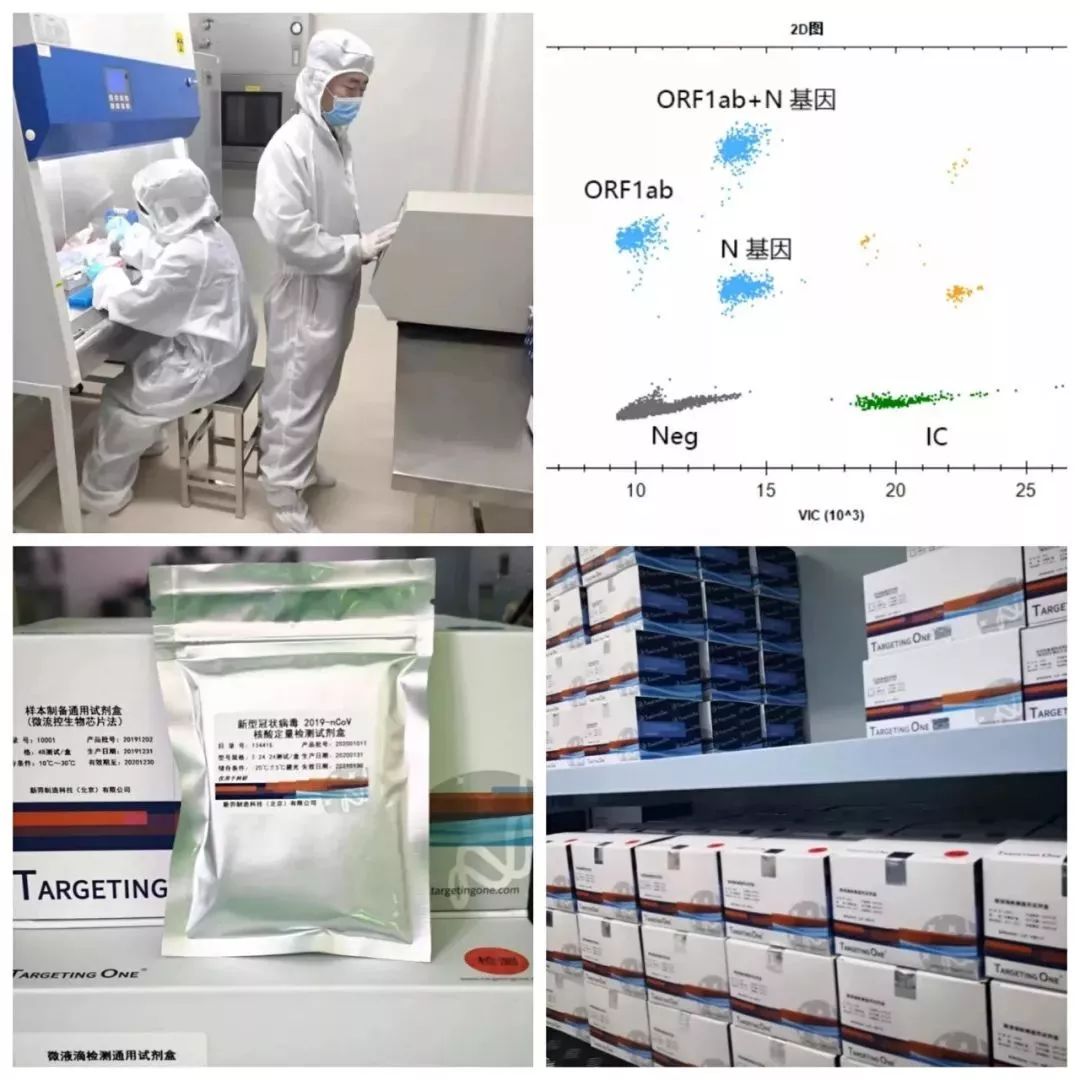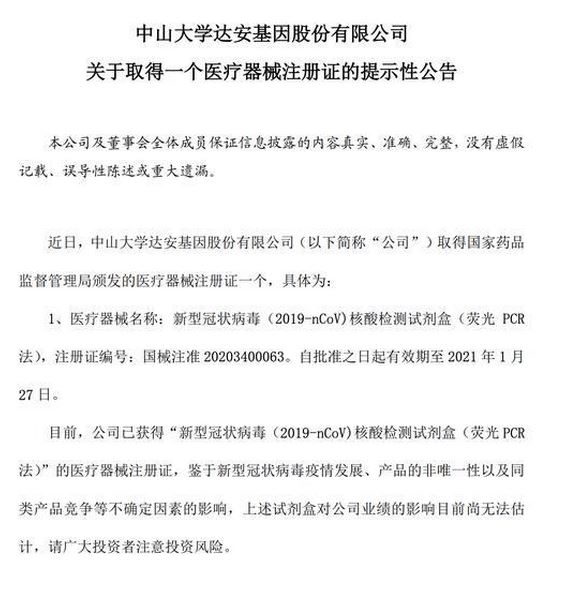http://bbs.ntpcb.com/m/index.php?a=read&tid=152121
逆天PCB论坛>逆天资讯快速检测新型冠状病毒,生物芯片再立功
2020-02-04 08:13
阅读: 回复:15
楼主:shuszhao
根据国家药品监督管理局官网近日公布的消息,目前已有多家企业研发的新型冠状病毒2019-nCoV核酸快速检测试剂盒获得了国家药监局颁发的医疗器械注册证。这其中还有采用生物芯片技术的,可见半导体技术在检测新型冠状病毒方面,正在发挥重要作用……
2月3日,国新办就疫情防控重点医疗物资和生活物资保障情况举行发布会。针对新型肺炎检测试剂供应紧张的问题,工信部总工程师田玉龙回应称,新型肺炎检测试剂生产是个很成熟的产业,可以自行从相关企业采购,没有技术上的问题,当前主要是复产问题。目前产能恢复值已达到了百分之六七十,2月1日,试剂日产量已经达到了77.3万人份,是疑似患病者的40倍,产能恢复值达到了百分之六七十,已经基本满足要求。
值得注意的是,此前,影响检测试剂盒使用的一大难题就在于“资质”问题。检测试剂盒作为三类医疗器械,一般情况下需要临床试验后,由国家药监局审批方可正式上市,获得挂网招采机会,才能进入院内销售,而这个过程耗时需要一两年。由于检测试剂盒并未正式获批,根据相关政策,医院无法直接采购新型病毒检测盒,病例样本需要送到疾控中心才能确诊。
1月24日,国家药监局对于之江生物、捷诺生物、达安基因、华大基因等新型冠状病毒检测试剂盒生产商开启了快速审批通道,“特事特办” 加快审批速度。
1月28日晚间,国家药品监督管理局应急审批通过6家企业6个新型冠状病毒检测产品,进一步扩大新型冠状病毒核酸检测试剂供给能力。
其中生物芯片技术在检测新型冠状病毒方面,正在发挥重要作用。
生命科学与微电子的交叉学科
生物芯片上海国家工程研究中心旗下上海芯超生物科技有限公司日前宣布,成功研制新型冠状病毒(2019-nCoV)抗体检测试剂盒(胶体金免疫层析法)。这种POCT快速检测试剂盒,运用免疫胶体金层析技术,实现对人体血清、血浆或全血中新型冠状病毒IgM/IgG抗体的体外定性检测,加样后15分钟内就可以观察到结果。而现有的PCR检测平台有很高的技术门槛,需要配备专业实验室、专用仪器和技术人员,一般最快需要两个多小时左右的检测时间。
该技术产品目前常规产能3万人份/天,根据需要,可以随时扩产到6万人份/天。芯超生物1月17日即研制成功了新型冠状病毒核酸检测试剂盒,已捐赠2万人份检测试剂盒到全国各地医院及疾控中心,,第二批捐赠价值300万元试剂盒,可方便快速地用于社区卫生服务中心、基层医院的早筛早诊,不但增加检测和诊疗的时效性,而且可以有效防止广大群众在大型医院密集检查而导致的交叉感染。但需要进一步临床验证才可以批量生产,争取进入国家药监局应急通道,尽早申请医疗器械注册证。
所谓生物芯片(Biochip)又称微阵列(Microarray)技术,是近年来生命科学与微电子学等学科相互交叉发展起来的一门高新技术。原理上,它是采用光导原位合成或微量点样等方法,将大量生物大分子比如核酸片段、多肽分子甚至组织切片、细胞等等生物样品有序地固化于支持物的表面,组成密集二维分子排列,然后与已标记的待测生物样品中靶分子杂交,通过特定的仪器对杂交信号的强度进行快速、并行、高效地检测分析。
《电子工程专辑》小编在去年参加芯原(Verisilicon)主办的以打造智慧医疗电子产业链为主题的第三届 “青城山中国IC生态高峰论坛”时,在IMEC中国智慧电子战略合作总监姜宁的演讲中,也了解到了生
下一页 (1/3)
https://www.ednchina.com/news/202002041203.html
新型冠状病毒检测速度加快一倍,生物芯片立功
时间:2020-02-04 作者:网络整理
2月1日,试剂日产量已经达到了77.3万人份,是疑似患病者的40倍,产能恢复值达到了百分之六七十,已经基本满足要求。其中生物芯片技术在检测新型冠状病毒方面,正在发挥重要作用。
2月3日,国新办就疫情防控重点医疗物资和生活物资保障情况举行发布会。针对新型肺炎检测试剂供应紧张的问题,工信部总工程师田玉龙回应称,新型肺炎检测试剂生产是个很成熟的产业,可以自行从相关企业采购,没有技术上的问题,当前主要是复产问题。目前产能恢复值已达到了百分之六七十,2月1日,试剂日产量已经达到了77.3万人份,是疑似患病者的40倍,产能恢复值达到了百分之六七十,已经基本满足要求。

值得注意的是,此前,影响检测试剂盒使用的一大难题就在于“资质”问题。检测试剂盒作为三类医疗器械,一般情况下需要临床试验后,由国家药监局审批方可正式上市,获得挂网招采机会,才能进入院内销售,而这个过程耗时需要一两年。由于检测试剂盒并未正式获批,根据相关政策,医院无法直接采购新型病毒检测盒,病例样本需要送到疾控中心才能确诊。
1月24日,国家药监局对于之江生物、捷诺生物、达安基因、华大基因等新型冠状病毒检测试剂盒生产商开启了快速审批通道,“特事特办” 加快审批速度。
1月28日晚间,国家药品监督管理局应急审批通过6家企业6个新型冠状病毒检测产品,进一步扩大新型冠状病毒核酸检测试剂供给能力。
此外,武汉大学中南医院通过改良核酸提取方法,使确认结果的速度比以前加快一倍,最快2小时即可得知核酸检测结果。
其中生物芯片技术在检测新型冠状病毒方面,正在发挥重要作用。
什么叫做生物芯片
通俗地说,生物芯片是指借助微加工和微电子技术,将数以万计、乃至百万计的特定序列的DNA片段(基因探针),有规律地排列固定于2cm2的硅片、玻片等支持物上,构成的一个二维DNA探针阵列,与计算机的电子芯片十分相似,所以被称为基因芯片,基因芯片的原型是80年代中期提出的。基因芯片的测序原理是杂交测序方法,即通过与一组已知序列的核酸探针杂交进行核酸序列测定的方法,在一块基片表面固定了序列已知的靶核苷酸的探针,当溶液中带有荧光标记的核酸序列TATGCAATCTAG,与基因芯片上对应位置的核酸探针产生互补匹配时,通过确定荧光强度最强的探针位置,获得一组序列完全互补的探针序列。据此可重组出靶核酸的序列,随着人类基因组计划的逐步实施以及分子生物学相关学科的迅猛发展,越来越多的动植物、微生物基因组序列得以测定,基因序列数据正在以前所未有的速度迅速增长,然而,怎样去研究如此众多基因在生命过程中所担负的功能就成了全世界生命科学工作者共同的课题,为此,建立新型杂交和测序方法以对大量的遗传信息进行高效、快速的检测、分析就显得格外重要了。
 生物芯片的分类
生物芯片的分类
全球首个生物芯片产品问世虽然已有20多年的时间,但生物芯片分类方式仍没有完全统一的标准。比较常见的分类方式有3种,分别是按用途、作用方式和成分来分类,按用途分类,分为生物电子芯片即用于生物计算机等生物电子产品的制造,生物分析芯片即用于各种生物大分子、细胞、组织的操作以及生物化学反应的检测。生物电子芯片目前在技术和应用上并不十分成熟,一般情况下所指的生物芯片主要为生物分析芯片,按照作用方式分类,分为主动式芯片是指把生物实验中的样本处理纯化、反应标记及检测等多个实验步骤集成,通过一步反应就可主动完成,其特点是快速、操作简单,因此有人又将它称为功能生物芯片。
主要包括微流体芯片和缩微芯片实验室,被动式芯片即各种微阵列芯片,是指把生物实验中的多个实验集成,但操作步骤不变,其特点是高度的并行性,目前的大部分芯片属于此类,由于这类芯片主要是获得大量的生物大分子信息,最终通过生物信息学进行数据挖掘分析,因此这类芯片又称为信息生物芯片,包括基因芯片、蛋白芯片、细胞芯片和组织芯片,按照成分分类,分为基因芯片又称DNA芯片(DNAchip)或DNA微阵列,是将cDNA或寡核苷酸按微阵列方式固定在微型载体上制成,蛋白质芯片是将蛋白质或抗原等一些非核酸生命物质按微阵列方式固定在微型载体上获得,芯片上的探针构成为蛋白质或芯片作用对象为蛋白质者统称为蛋白质芯片,细胞芯片是将细胞按照特定的方式固定在载体上,用来检测细胞间相互影响或相互作用,组织芯片是将组织切片等按照特定的方式固定在载体上,用来进行免疫组织化学等组织内成分差异研究。
快速检测新型冠状病毒,生物芯片再立功
生物芯片上海国家工程研究中心旗下上海芯超生物科技有限公司日前宣布,成功研制新型冠状病毒(2019-nCoV)抗体检测试剂盒(胶体金免疫层析法)。这种POCT快速检测试剂盒,运用免疫胶体金层析技术,实现对人体血清、血浆或全血中新型冠状病毒IgM/IgG抗体的体外定性检测,加样后15分钟内就可以观察到结果。而现有的PCR检测平台有很高的技术门槛,需要配备专业实验室、专用仪器和技术人员,一般最快需要两个多小时左右的检测时间。

该技术产品目前常规产能3万人份/天,根据需要,可以随时扩产到6万人份/天。芯超生物1月17日即研制成功了新型冠状病毒核酸检测试剂盒,已捐赠2万人份检测试剂盒到全国各地医院及疾控中心,,第二批捐赠价值300万元试剂盒,可方便快速地用于社区卫生服务中心、基层医院的早筛早诊,不但增加检测和诊疗的时效性,而且可以有效防止广大群众在大型医院密集检查而导致的交叉感染。但需要进一步临床验证才可以批量生产,争取进入国家药监局应急通道,尽早申请医疗器械注册证。
所谓生物芯片(Biochip)又称微阵列(Microarray)技术,是近年来生命科学与微电子学等学科相互交叉发展起来的一门高新技术。原理上,它是采用光导原位合成或微量点样等方法,将大量生物大分子比如核酸片段、多肽分子甚至组织切片、细胞等等生物样品有序地固化于支持物的表面,组成密集二维分子排列,然后与已标记的待测生物样品中靶分子杂交,通过特定的仪器对杂交信号的强度进行快速、并行、高效地检测分析。
多家机构和企业完成快速检测试剂盒研发
西北大学国家微检测工程技术研究中心也迅速研发检测试剂并取得成功。西北大学国家微检测工程技术研究中心戴鹏高教授基于中国疾病预防控制中心公布的病毒参考序列,第一时间研发并测试成功新型冠状病毒(2019-nCoV)核酸检测试剂盒(荧光双重PCR法),并向省市区相关部门报备,助力快速筛查和监测感染人群。
据悉,由西北大学国家微检测系统工程技术研究中心提供技术支持的陕西佰美基因股份有限公司将向政府无偿提供10万人份新型冠状病毒检测试剂盒。首批生产的2万人份正有序无偿捐赠给咸阳市政府和商洛市政府各自1万人份。与此同时,陕西佰美医学检验实验室也已向西安市临检中心报备,服从政府防控物资统一调拨,服务社会。
另外,西北大学生命科学与医学部崔亚丽教授团队创办的西安金磁纳米生物技术有限公司,正在加紧研发15分钟出结果的新冠病毒N-蛋白检测试剂盒。日前,公司向西安高新医院捐赠了快速准确检测的磁定量免疫分析仪器,用于细菌和病毒感染鉴别PCT检测试剂盒。
此外,上海之江生物科技、国药中国生物上海捷诺也取得了国家药监局颁发的第一批新型冠状病毒核酸检测试剂盒医疗器械注册证,上海伯杰生物科技有限公司进入了首批应急审批程序。

上海速芯生物科技有限公司也宣布,在其微流控核酸检测平台上开发出新型冠状病毒(2019-nCoA)核酸微流控检测芯片,配合其自主研发的微流控芯片核酸分析仪,可以实现对新型冠状病毒ORF1ab、E、N三个基因靶标的同时检测,并自带内标,每张芯片能够检测8个病人样本,可以在40分钟内得到病毒判定结果,满足各疾控和医疗机构的检测需求。
春节期间,新羿生物公司在国家CDC的指导下与清华大学生物医学工程系等单位协力合作,1月29日,新型冠状病毒2019-nCoV核酸定量检测试剂盒(数字PCR法)获得初步成功,并第一时间联系合作机构进行评价。

研发数字PCR法2019-nCoV核酸检测试剂盒
据介绍,新羿生物研发的数字PCR(第三代PCR)检测灵敏度更高,有望弥补荧光PCR(第二代PCR)的检测盲区。数字PCR有望应用于荧光PCR设备检测有疑问的病例复核,患病者病毒携带的定量检测和病人出院复核等。同时,有望应用于无症状的携带者检测(“隐形病人”排查)。
2月2日,中山大学达安基因股份有限公司官方宣布,公司取得国家药品 监督管理局颁发的医疗器械注册证一个,医疗器械名称为”新型冠状病毒(2019-nCoV)核酸检测试剂盒(荧光 PCR 法)“,注册证编号“国械注准 20203400063”。自批准之日起有效期至 2021 年 1 月 27 日。

2月2日,万孚生物宣布其2019新型冠状病毒(2019-nCoV)系列检测试剂新品研发成功,目前部分产品已完成注册产品抽样工作。据介绍,万孚生物新研发的胶体金免疫层析法的快速检测产品,分别是2019-nCoV新型冠状病毒抗原检测试剂和抗体检测试剂。其中,抗原检测试剂可检测咽拭子、下呼吸道样本;抗体检测试剂可检测全血、血清和血浆样本。抗原、抗体的联合检测,将有助于快速区分2019-nCoV新型冠状病毒的潜伏期、急性期、病程初期和恢复期。
万孚生物此次新研发的2019-nCoV新型冠状病毒抗原检测试剂、抗体检测试剂,与已经上市的甲型/乙型流感病毒(FluA+B)抗原,肺支/肺衣等检测试剂,形成“三剑客”。这“三剑客”均是单人份检测、常温储运、操作简便、无需配套仪器设备,最快15分钟,即可快速有效的区分流感、普通感冒与新型冠状病毒感染的肺炎。可广泛应用于各级医院、CDC、社区、诊所、县乡村等医疗卫生机构的筛查,企事业单位和学校等复工复学的筛查,机场、高铁站等公共交通枢纽和场所的筛查以及海关检验检疫等。为疫情防控期间,快速区分不同的致病源,确定诊疗方案提供有力支持。
除快速筛查“三剑客”外,万孚生物“2019新型冠状病毒核酸检测试剂盒(荧光PCR法)”可检测咽拭子,基于多重实时荧光PCR平台,结合了特异性引物和荧光探针两种技术,保证了检测的特异性和准确性。PCR试剂以冻干形式提供,大大降低了冷链运输以及试剂储存难度,适合将试剂下发到基层使用,可为此次疫情防控工作提供更便捷、更广泛、更精准的检测支持。
万孚生物不仅提供2019新型冠状病毒核酸检测试剂盒(荧光PCR法),同时也提供POCT全自动多重核酸检测系统(微阵列芯片法)。据了解,该系统有三大特点:一是多重检测,可有效区分普通冠状病毒、流感病毒等;二是一体化全封闭检测,整合核酸提取、多重PCR扩增、杂交等实验功能于一体,避免污染,无需PCR认证实验室即可使用;三是便捷,“样本进,结果出”,从样本到结果全自动,操作简便,无需培训、无需专业人士操作。广泛适用于医院急门诊和临床科室、CDC、基层医疗卫生机构与检验检疫。
美康生物2月3日早间公告,公司近日完成了两款新型冠状病毒检测产品的研制。不过产品尚处于公司临床验证阶段,临床验证的结果符合相关检测标准,公司将提交样品及相关资料向国家药品监督管理局进行注册申请,能否取得医疗器械注册证书及取得注册证书的时间具有不确定性。
其新型冠状病毒核酸检测试剂盒,采用实时荧光定量PCR技术,以2019-nCoV新型冠状病毒的高度特异性序列为靶区域,设计特异性引物和TaqMan荧光探针,通过多重荧光PCR扩增,配套相关具有国家药品监督管理局批准的产品注册证书的实时荧光定量PCR分析仪,实现对2019-nCoV新型冠状病毒RNA的检测,最快2个小时可出检测结果。
美康生物研发的新型冠状病毒蛋白快速检测试剂盒,采用免疫层析法,是一种POCT快速检测方式。此方法通过分别标记在纳米颗粒上和固定在硝酸纤维膜检测区带上的特异性抗体,与样本中的新型冠状病毒蛋白抗原形成双抗体夹心的免疫反应,并运用纳米颗粒的显色作用,从而实现对特异性的新型冠状病毒蛋白的定性检测。该产品主要用于医疗机构对新型冠状病毒的初步快速筛查,最快10分钟可出结果。
疫情发生后,国家药监局即启动医疗器械应急审批程序,按照“统一指挥、早期介入、随到随审、科学审批”的原则和确保产品安全、有效、质量可控的要求,全力加快审评审批速度。
(综合整理自各公司官网及公众号、21世纪经济报道、电子工程专辑、百度百家;责编:Demi Xia)
医疗电子 产业前沿 芯片
逆天PCB论坛>逆天资讯快速检测新型冠状病毒,生物芯片再立功
2020-02-04 08:13
阅读: 回复:15
楼主:shuszhao
根据国家药品监督管理局官网近日公布的消息,目前已有多家企业研发的新型冠状病毒2019-nCoV核酸快速检测试剂盒获得了国家药监局颁发的医疗器械注册证。这其中还有采用生物芯片技术的,可见半导体技术在检测新型冠状病毒方面,正在发挥重要作用……
2月3日,国新办就疫情防控重点医疗物资和生活物资保障情况举行发布会。针对新型肺炎检测试剂供应紧张的问题,工信部总工程师田玉龙回应称,新型肺炎检测试剂生产是个很成熟的产业,可以自行从相关企业采购,没有技术上的问题,当前主要是复产问题。目前产能恢复值已达到了百分之六七十,2月1日,试剂日产量已经达到了77.3万人份,是疑似患病者的40倍,产能恢复值达到了百分之六七十,已经基本满足要求。
值得注意的是,此前,影响检测试剂盒使用的一大难题就在于“资质”问题。检测试剂盒作为三类医疗器械,一般情况下需要临床试验后,由国家药监局审批方可正式上市,获得挂网招采机会,才能进入院内销售,而这个过程耗时需要一两年。由于检测试剂盒并未正式获批,根据相关政策,医院无法直接采购新型病毒检测盒,病例样本需要送到疾控中心才能确诊。
1月24日,国家药监局对于之江生物、捷诺生物、达安基因、华大基因等新型冠状病毒检测试剂盒生产商开启了快速审批通道,“特事特办” 加快审批速度。
1月28日晚间,国家药品监督管理局应急审批通过6家企业6个新型冠状病毒检测产品,进一步扩大新型冠状病毒核酸检测试剂供给能力。
其中生物芯片技术在检测新型冠状病毒方面,正在发挥重要作用。
生命科学与微电子的交叉学科
生物芯片上海国家工程研究中心旗下上海芯超生物科技有限公司日前宣布,成功研制新型冠状病毒(2019-nCoV)抗体检测试剂盒(胶体金免疫层析法)。这种POCT快速检测试剂盒,运用免疫胶体金层析技术,实现对人体血清、血浆或全血中新型冠状病毒IgM/IgG抗体的体外定性检测,加样后15分钟内就可以观察到结果。而现有的PCR检测平台有很高的技术门槛,需要配备专业实验室、专用仪器和技术人员,一般最快需要两个多小时左右的检测时间。
该技术产品目前常规产能3万人份/天,根据需要,可以随时扩产到6万人份/天。芯超生物1月17日即研制成功了新型冠状病毒核酸检测试剂盒,已捐赠2万人份检测试剂盒到全国各地医院及疾控中心,,第二批捐赠价值300万元试剂盒,可方便快速地用于社区卫生服务中心、基层医院的早筛早诊,不但增加检测和诊疗的时效性,而且可以有效防止广大群众在大型医院密集检查而导致的交叉感染。但需要进一步临床验证才可以批量生产,争取进入国家药监局应急通道,尽早申请医疗器械注册证。
所谓生物芯片(Biochip)又称微阵列(Microarray)技术,是近年来生命科学与微电子学等学科相互交叉发展起来的一门高新技术。原理上,它是采用光导原位合成或微量点样等方法,将大量生物大分子比如核酸片段、多肽分子甚至组织切片、细胞等等生物样品有序地固化于支持物的表面,组成密集二维分子排列,然后与已标记的待测生物样品中靶分子杂交,通过特定的仪器对杂交信号的强度进行快速、并行、高效地检测分析。
《电子工程专辑》小编在去年参加芯原(Verisilicon)主办的以打造智慧医疗电子产业链为主题的第三届 “青城山中国IC生态高峰论坛”时,在IMEC中国智慧电子战略合作总监姜宁的演讲中,也了解到了生
下一页 (1/3)
https://www.ednchina.com/news/202002041203.html
新型冠状病毒检测速度加快一倍,生物芯片立功
时间:2020-02-04 作者:网络整理
2月1日,试剂日产量已经达到了77.3万人份,是疑似患病者的40倍,产能恢复值达到了百分之六七十,已经基本满足要求。其中生物芯片技术在检测新型冠状病毒方面,正在发挥重要作用。
2月3日,国新办就疫情防控重点医疗物资和生活物资保障情况举行发布会。针对新型肺炎检测试剂供应紧张的问题,工信部总工程师田玉龙回应称,新型肺炎检测试剂生产是个很成熟的产业,可以自行从相关企业采购,没有技术上的问题,当前主要是复产问题。目前产能恢复值已达到了百分之六七十,2月1日,试剂日产量已经达到了77.3万人份,是疑似患病者的40倍,产能恢复值达到了百分之六七十,已经基本满足要求。

值得注意的是,此前,影响检测试剂盒使用的一大难题就在于“资质”问题。检测试剂盒作为三类医疗器械,一般情况下需要临床试验后,由国家药监局审批方可正式上市,获得挂网招采机会,才能进入院内销售,而这个过程耗时需要一两年。由于检测试剂盒并未正式获批,根据相关政策,医院无法直接采购新型病毒检测盒,病例样本需要送到疾控中心才能确诊。
1月24日,国家药监局对于之江生物、捷诺生物、达安基因、华大基因等新型冠状病毒检测试剂盒生产商开启了快速审批通道,“特事特办” 加快审批速度。
1月28日晚间,国家药品监督管理局应急审批通过6家企业6个新型冠状病毒检测产品,进一步扩大新型冠状病毒核酸检测试剂供给能力。
此外,武汉大学中南医院通过改良核酸提取方法,使确认结果的速度比以前加快一倍,最快2小时即可得知核酸检测结果。
其中生物芯片技术在检测新型冠状病毒方面,正在发挥重要作用。
什么叫做生物芯片
通俗地说,生物芯片是指借助微加工和微电子技术,将数以万计、乃至百万计的特定序列的DNA片段(基因探针),有规律地排列固定于2cm2的硅片、玻片等支持物上,构成的一个二维DNA探针阵列,与计算机的电子芯片十分相似,所以被称为基因芯片,基因芯片的原型是80年代中期提出的。基因芯片的测序原理是杂交测序方法,即通过与一组已知序列的核酸探针杂交进行核酸序列测定的方法,在一块基片表面固定了序列已知的靶核苷酸的探针,当溶液中带有荧光标记的核酸序列TATGCAATCTAG,与基因芯片上对应位置的核酸探针产生互补匹配时,通过确定荧光强度最强的探针位置,获得一组序列完全互补的探针序列。据此可重组出靶核酸的序列,随着人类基因组计划的逐步实施以及分子生物学相关学科的迅猛发展,越来越多的动植物、微生物基因组序列得以测定,基因序列数据正在以前所未有的速度迅速增长,然而,怎样去研究如此众多基因在生命过程中所担负的功能就成了全世界生命科学工作者共同的课题,为此,建立新型杂交和测序方法以对大量的遗传信息进行高效、快速的检测、分析就显得格外重要了。

全球首个生物芯片产品问世虽然已有20多年的时间,但生物芯片分类方式仍没有完全统一的标准。比较常见的分类方式有3种,分别是按用途、作用方式和成分来分类,按用途分类,分为生物电子芯片即用于生物计算机等生物电子产品的制造,生物分析芯片即用于各种生物大分子、细胞、组织的操作以及生物化学反应的检测。生物电子芯片目前在技术和应用上并不十分成熟,一般情况下所指的生物芯片主要为生物分析芯片,按照作用方式分类,分为主动式芯片是指把生物实验中的样本处理纯化、反应标记及检测等多个实验步骤集成,通过一步反应就可主动完成,其特点是快速、操作简单,因此有人又将它称为功能生物芯片。
主要包括微流体芯片和缩微芯片实验室,被动式芯片即各种微阵列芯片,是指把生物实验中的多个实验集成,但操作步骤不变,其特点是高度的并行性,目前的大部分芯片属于此类,由于这类芯片主要是获得大量的生物大分子信息,最终通过生物信息学进行数据挖掘分析,因此这类芯片又称为信息生物芯片,包括基因芯片、蛋白芯片、细胞芯片和组织芯片,按照成分分类,分为基因芯片又称DNA芯片(DNAchip)或DNA微阵列,是将cDNA或寡核苷酸按微阵列方式固定在微型载体上制成,蛋白质芯片是将蛋白质或抗原等一些非核酸生命物质按微阵列方式固定在微型载体上获得,芯片上的探针构成为蛋白质或芯片作用对象为蛋白质者统称为蛋白质芯片,细胞芯片是将细胞按照特定的方式固定在载体上,用来检测细胞间相互影响或相互作用,组织芯片是将组织切片等按照特定的方式固定在载体上,用来进行免疫组织化学等组织内成分差异研究。
快速检测新型冠状病毒,生物芯片再立功
生物芯片上海国家工程研究中心旗下上海芯超生物科技有限公司日前宣布,成功研制新型冠状病毒(2019-nCoV)抗体检测试剂盒(胶体金免疫层析法)。这种POCT快速检测试剂盒,运用免疫胶体金层析技术,实现对人体血清、血浆或全血中新型冠状病毒IgM/IgG抗体的体外定性检测,加样后15分钟内就可以观察到结果。而现有的PCR检测平台有很高的技术门槛,需要配备专业实验室、专用仪器和技术人员,一般最快需要两个多小时左右的检测时间。

该技术产品目前常规产能3万人份/天,根据需要,可以随时扩产到6万人份/天。芯超生物1月17日即研制成功了新型冠状病毒核酸检测试剂盒,已捐赠2万人份检测试剂盒到全国各地医院及疾控中心,,第二批捐赠价值300万元试剂盒,可方便快速地用于社区卫生服务中心、基层医院的早筛早诊,不但增加检测和诊疗的时效性,而且可以有效防止广大群众在大型医院密集检查而导致的交叉感染。但需要进一步临床验证才可以批量生产,争取进入国家药监局应急通道,尽早申请医疗器械注册证。
所谓生物芯片(Biochip)又称微阵列(Microarray)技术,是近年来生命科学与微电子学等学科相互交叉发展起来的一门高新技术。原理上,它是采用光导原位合成或微量点样等方法,将大量生物大分子比如核酸片段、多肽分子甚至组织切片、细胞等等生物样品有序地固化于支持物的表面,组成密集二维分子排列,然后与已标记的待测生物样品中靶分子杂交,通过特定的仪器对杂交信号的强度进行快速、并行、高效地检测分析。
多家机构和企业完成快速检测试剂盒研发
西北大学国家微检测工程技术研究中心也迅速研发检测试剂并取得成功。西北大学国家微检测工程技术研究中心戴鹏高教授基于中国疾病预防控制中心公布的病毒参考序列,第一时间研发并测试成功新型冠状病毒(2019-nCoV)核酸检测试剂盒(荧光双重PCR法),并向省市区相关部门报备,助力快速筛查和监测感染人群。
据悉,由西北大学国家微检测系统工程技术研究中心提供技术支持的陕西佰美基因股份有限公司将向政府无偿提供10万人份新型冠状病毒检测试剂盒。首批生产的2万人份正有序无偿捐赠给咸阳市政府和商洛市政府各自1万人份。与此同时,陕西佰美医学检验实验室也已向西安市临检中心报备,服从政府防控物资统一调拨,服务社会。
另外,西北大学生命科学与医学部崔亚丽教授团队创办的西安金磁纳米生物技术有限公司,正在加紧研发15分钟出结果的新冠病毒N-蛋白检测试剂盒。日前,公司向西安高新医院捐赠了快速准确检测的磁定量免疫分析仪器,用于细菌和病毒感染鉴别PCT检测试剂盒。
此外,上海之江生物科技、国药中国生物上海捷诺也取得了国家药监局颁发的第一批新型冠状病毒核酸检测试剂盒医疗器械注册证,上海伯杰生物科技有限公司进入了首批应急审批程序。

上海速芯生物科技有限公司也宣布,在其微流控核酸检测平台上开发出新型冠状病毒(2019-nCoA)核酸微流控检测芯片,配合其自主研发的微流控芯片核酸分析仪,可以实现对新型冠状病毒ORF1ab、E、N三个基因靶标的同时检测,并自带内标,每张芯片能够检测8个病人样本,可以在40分钟内得到病毒判定结果,满足各疾控和医疗机构的检测需求。
春节期间,新羿生物公司在国家CDC的指导下与清华大学生物医学工程系等单位协力合作,1月29日,新型冠状病毒2019-nCoV核酸定量检测试剂盒(数字PCR法)获得初步成功,并第一时间联系合作机构进行评价。

研发数字PCR法2019-nCoV核酸检测试剂盒
据介绍,新羿生物研发的数字PCR(第三代PCR)检测灵敏度更高,有望弥补荧光PCR(第二代PCR)的检测盲区。数字PCR有望应用于荧光PCR设备检测有疑问的病例复核,患病者病毒携带的定量检测和病人出院复核等。同时,有望应用于无症状的携带者检测(“隐形病人”排查)。
2月2日,中山大学达安基因股份有限公司官方宣布,公司取得国家药品 监督管理局颁发的医疗器械注册证一个,医疗器械名称为”新型冠状病毒(2019-nCoV)核酸检测试剂盒(荧光 PCR 法)“,注册证编号“国械注准 20203400063”。自批准之日起有效期至 2021 年 1 月 27 日。

2月2日,万孚生物宣布其2019新型冠状病毒(2019-nCoV)系列检测试剂新品研发成功,目前部分产品已完成注册产品抽样工作。据介绍,万孚生物新研发的胶体金免疫层析法的快速检测产品,分别是2019-nCoV新型冠状病毒抗原检测试剂和抗体检测试剂。其中,抗原检测试剂可检测咽拭子、下呼吸道样本;抗体检测试剂可检测全血、血清和血浆样本。抗原、抗体的联合检测,将有助于快速区分2019-nCoV新型冠状病毒的潜伏期、急性期、病程初期和恢复期。
万孚生物此次新研发的2019-nCoV新型冠状病毒抗原检测试剂、抗体检测试剂,与已经上市的甲型/乙型流感病毒(FluA+B)抗原,肺支/肺衣等检测试剂,形成“三剑客”。这“三剑客”均是单人份检测、常温储运、操作简便、无需配套仪器设备,最快15分钟,即可快速有效的区分流感、普通感冒与新型冠状病毒感染的肺炎。可广泛应用于各级医院、CDC、社区、诊所、县乡村等医疗卫生机构的筛查,企事业单位和学校等复工复学的筛查,机场、高铁站等公共交通枢纽和场所的筛查以及海关检验检疫等。为疫情防控期间,快速区分不同的致病源,确定诊疗方案提供有力支持。
除快速筛查“三剑客”外,万孚生物“2019新型冠状病毒核酸检测试剂盒(荧光PCR法)”可检测咽拭子,基于多重实时荧光PCR平台,结合了特异性引物和荧光探针两种技术,保证了检测的特异性和准确性。PCR试剂以冻干形式提供,大大降低了冷链运输以及试剂储存难度,适合将试剂下发到基层使用,可为此次疫情防控工作提供更便捷、更广泛、更精准的检测支持。
万孚生物不仅提供2019新型冠状病毒核酸检测试剂盒(荧光PCR法),同时也提供POCT全自动多重核酸检测系统(微阵列芯片法)。据了解,该系统有三大特点:一是多重检测,可有效区分普通冠状病毒、流感病毒等;二是一体化全封闭检测,整合核酸提取、多重PCR扩增、杂交等实验功能于一体,避免污染,无需PCR认证实验室即可使用;三是便捷,“样本进,结果出”,从样本到结果全自动,操作简便,无需培训、无需专业人士操作。广泛适用于医院急门诊和临床科室、CDC、基层医疗卫生机构与检验检疫。
美康生物2月3日早间公告,公司近日完成了两款新型冠状病毒检测产品的研制。不过产品尚处于公司临床验证阶段,临床验证的结果符合相关检测标准,公司将提交样品及相关资料向国家药品监督管理局进行注册申请,能否取得医疗器械注册证书及取得注册证书的时间具有不确定性。
其新型冠状病毒核酸检测试剂盒,采用实时荧光定量PCR技术,以2019-nCoV新型冠状病毒的高度特异性序列为靶区域,设计特异性引物和TaqMan荧光探针,通过多重荧光PCR扩增,配套相关具有国家药品监督管理局批准的产品注册证书的实时荧光定量PCR分析仪,实现对2019-nCoV新型冠状病毒RNA的检测,最快2个小时可出检测结果。
美康生物研发的新型冠状病毒蛋白快速检测试剂盒,采用免疫层析法,是一种POCT快速检测方式。此方法通过分别标记在纳米颗粒上和固定在硝酸纤维膜检测区带上的特异性抗体,与样本中的新型冠状病毒蛋白抗原形成双抗体夹心的免疫反应,并运用纳米颗粒的显色作用,从而实现对特异性的新型冠状病毒蛋白的定性检测。该产品主要用于医疗机构对新型冠状病毒的初步快速筛查,最快10分钟可出结果。
疫情发生后,国家药监局即启动医疗器械应急审批程序,按照“统一指挥、早期介入、随到随审、科学审批”的原则和确保产品安全、有效、质量可控的要求,全力加快审评审批速度。
(综合整理自各公司官网及公众号、21世纪经济报道、电子工程专辑、百度百家;责编:Demi Xia)
医疗电子 产业前沿 芯片
